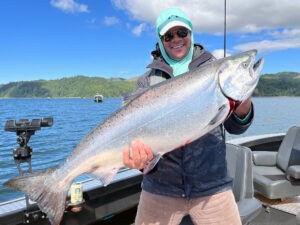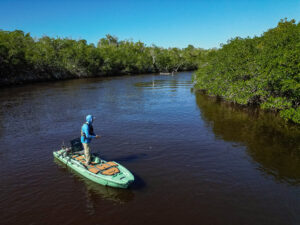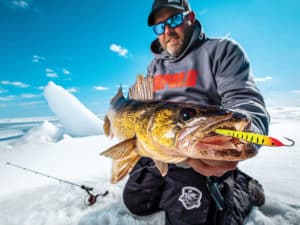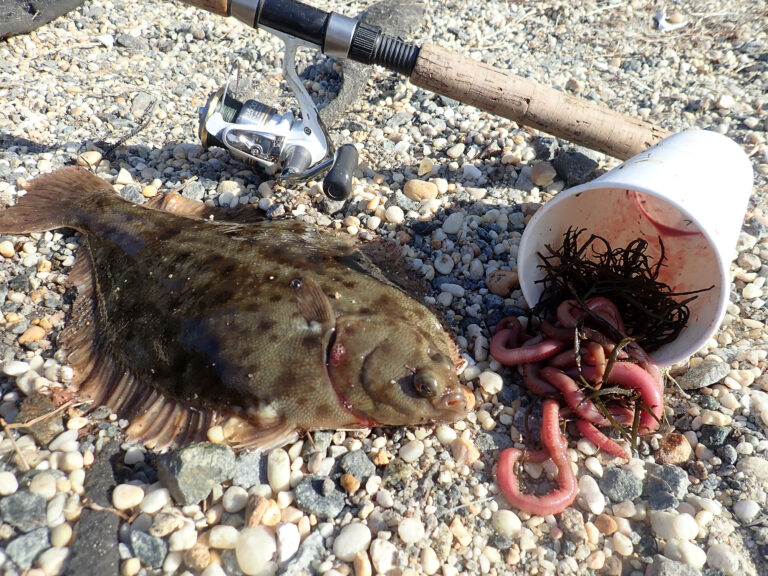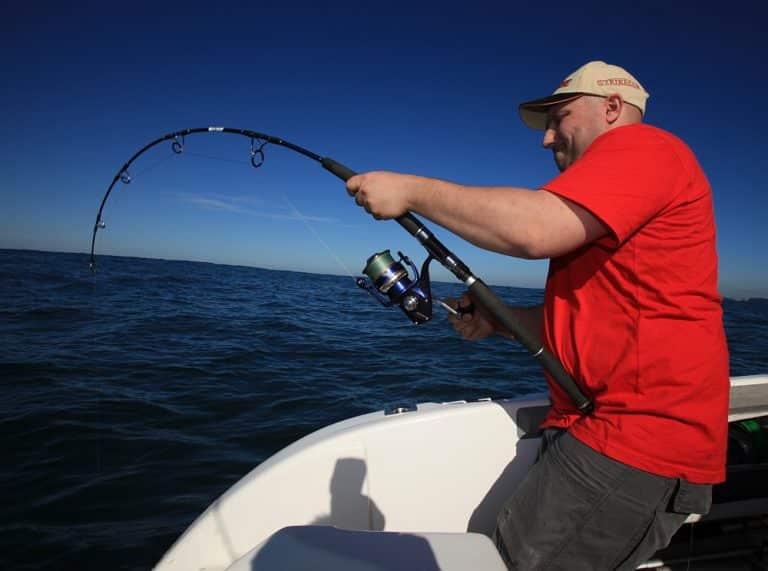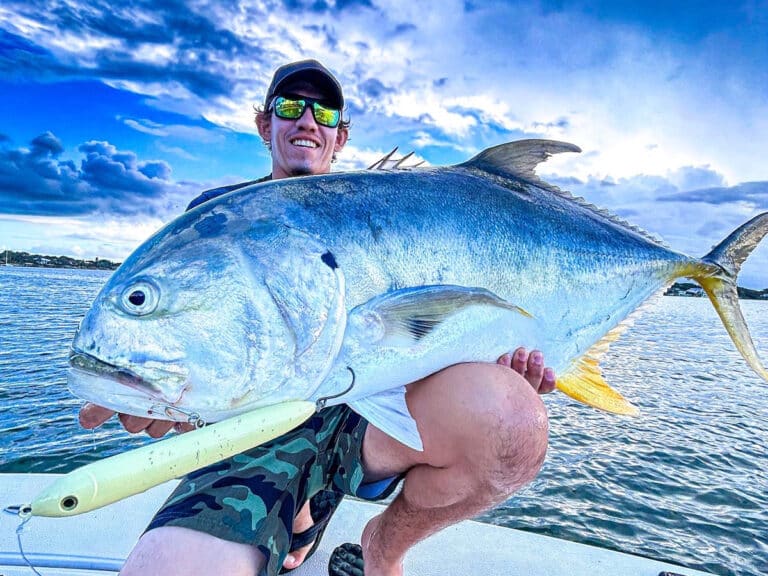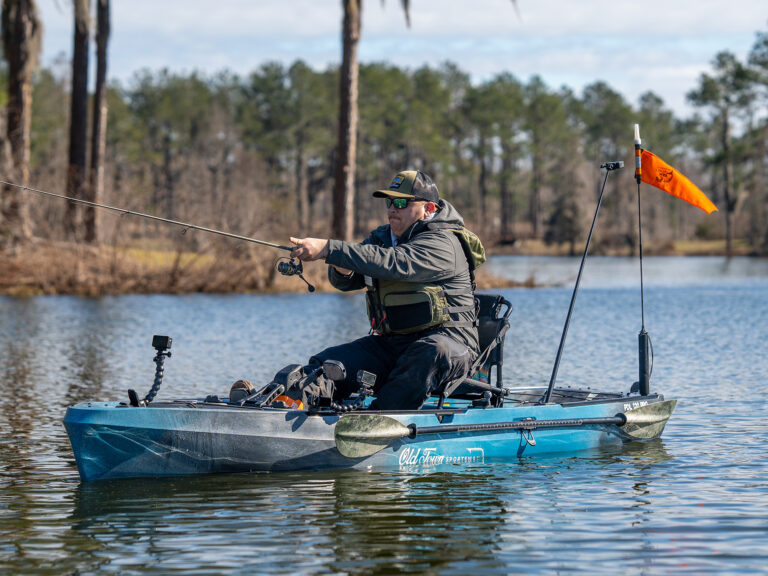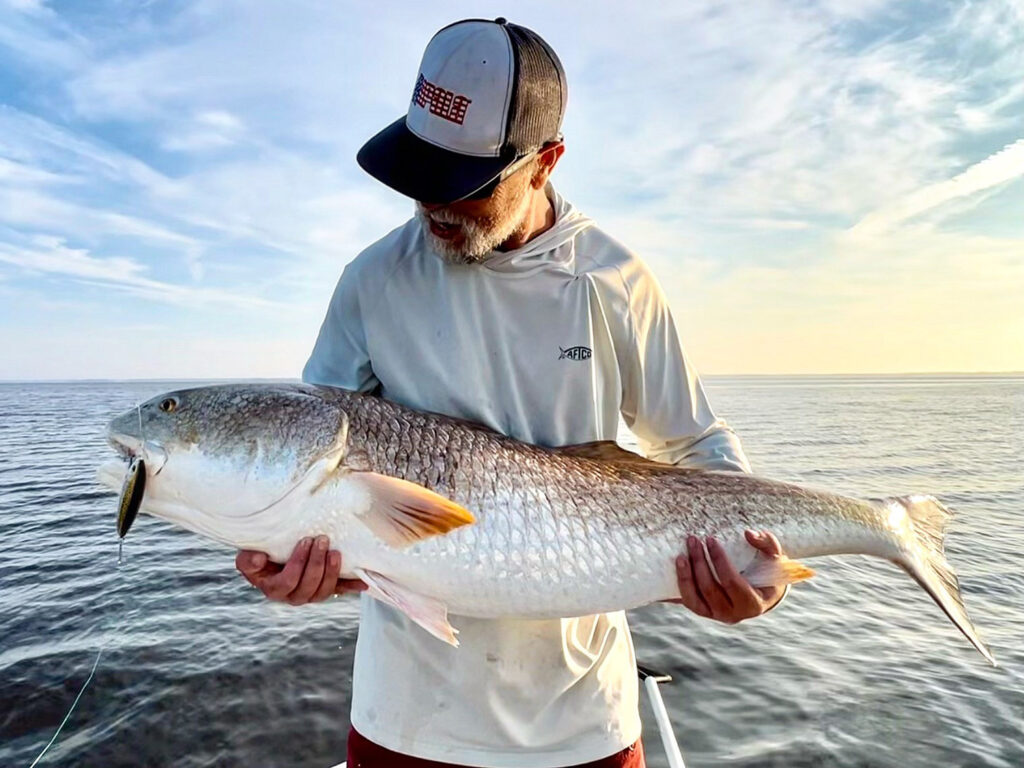
North Carolina’s “old drum” fishery offers anglers a good chance to catch some of the largest redfish in the world. Now is the time to get in on the action.
Red drum is a highly sought-after species up and down the Mid-Atlantic seaboard. Many anglers have formed a special bond with redfish in large part because of their willingness to take a baited hook, artificial lure, or fly. Throughout their range, the strong fight of a redfish keeps anglers’ hearts pumping and adrenaline flowing.
Luckily, anglers in North Carolina have access to some of the largest red drum in the world. In August and September, mature “old drum” come inshore to spawn at the mouth of the Pamlico and Neuse rivers before moving off Outer Banks beaches where they can be targeted in October and November. People from all over the country travel to isolated destinations like Cedar Island, Swan Quarter, Ocracoke and Cape Lookout to try to catch and release a “citation” fish. North Carolina’s Saltwater Fishing Tournament, also known as the Citation Program, recognizes exceptional catches of North Carolina’s most popular sport fish. A citation red drum must measure at least 40 inches. The all-tackle world record, a 94-pound, 2-ounce giant, was landed in Cape Hatteras back in 1984.
Historically most old drum were caught by bait fishermen using large pieces of fresh cut mullet or menhaden late in the evening or at night. Anglers can also have success catching huge redfish during the day using a variety of different artificial lures. As the fishery has evolved, it has led to increased fishing pressure and sometimes very finicky fish. Capt. Mitchel Blake, of FishIBX Charters, grew up fishing the area over the past several decades and has seen the changes.
Where to Find Reds
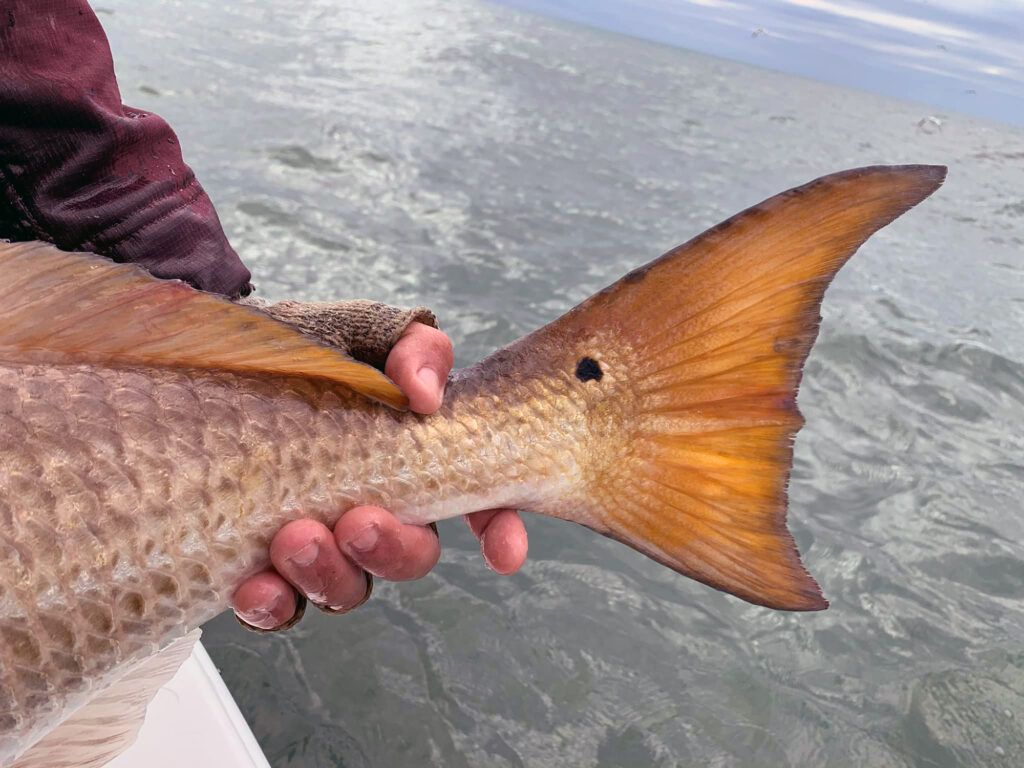
Pamlico Sound is a large body of water with lots of depth transitions and different bottom compositions. There are no real hot spots — what was good yesterday may well be dead water today. Capt. Blake reminds anglers that the fish are always on the move, and they are significantly impacted by boat traffic. Some studies have shown that drum travel more than 25 miles a day, advancing along submerged edges and ledges in different depth ranges searching for bait and preparing to spawn.
Successful anglers get on the water early to locate them when they are feeding in 2 to 4 feet of water. Sometimes it is obvious, as reds move a lot of water when they are feeding aggressively. Search for pushes and wakes as you move into skinny water; busting mullet and shrimp popping in the shallows are also good indicators of feeding drum in the area. As the day moves on, especially in areas where there is a lot of boat activity, reds tend to move into deeper water. But they can still be found feeding on large schools of menhaden at the surface. It’s the subtle things Capt. Blake sees that keep him on the fish as he slowly dissects the river each day, not the run-and-gun style so prevalent in the age of social media and Internet reports.
As you approach an area that seems to have the right conditions, stealth is critical to success. Blake’s biggest piece of advice is to slow down and pay attention to the surroundings. Shut off the big motor early, before you push into the zone, and use the trolling motor as sparingly as possible to hold your position. If possible, use the wind to push you within casting range. Don’t just zoom from spot to spot, as you might be running over the fish while you stare at your phone or navigation screen. Things tend to materialize fast, so you want to be ready with several rods rigged with a couple of different offerings.
Reviving Red Drum After the Fight
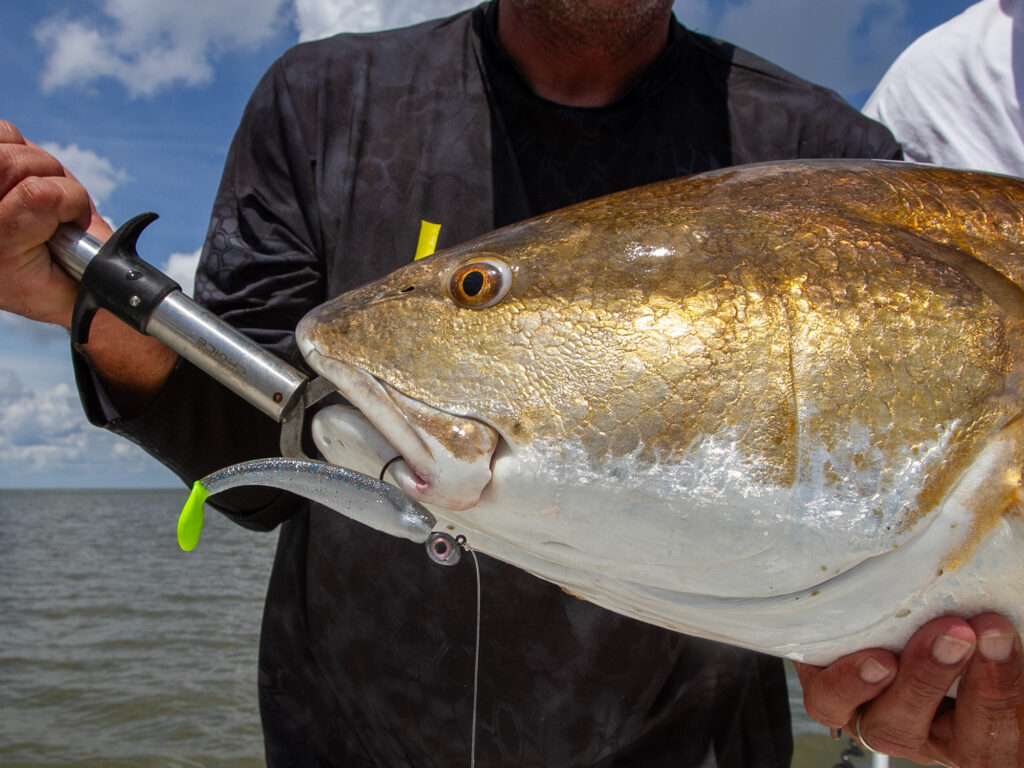
For artificials lures, there are several options that work well. I prefer to fish topwater lures, as I can make repetitive long casts with a big surface popper. Walk-the-dog-style lures work well, too. Both choices make great search baits, as they are designed to imitate the sounds of struggling baitfish. When a fish hears the commotion on the surface, they tend to rise and look for an easy meal. Having a big 50-pound redfish explode on a surface lure is about as exciting as it gets. Large popping-cork rigs work well, too, especially if fish seem skittish or are hesitant to eat a surface plug.
We need to do everything we can to care for these fish, as they are the breeding stock for the entire population. Be mindful and use appropriate tackle to land fish quickly, so they do not exhaust themselves during the fight. Tagging data is clear; red drum survive well when released if they are handled properly. Many fish I catch are released without bringing them into the boat, but I admit I love to hold them in my arms for a photo. When landing a fish, never reach into or attempt to support the fish by the gill plate or mouth. Hold them horizontally and support the weight of the fish evenly as you cradle it like a baby in your arms. Have your camera ready beforehand. Enjoy the moment you have with the fish, but return it to the water as quickly as possible.
Spend time reviving the fish after a hard-fought battle. That means forcing water over its gills by inching the boat forward. If fishing in moving water, the water does the work for you, so hold that redfish face-first into the current. Moving a redfish forward and backward in the water doesn’t help much — no matter what the TV shows say. Watching a red drum regain its strength and kick away is rewarding, almost as much as tricking them into biting your topwater.


